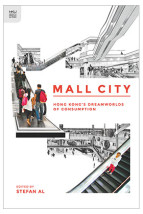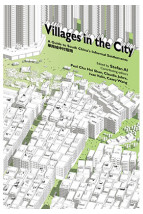Factory Towns of South China 華南工廠城
An Illustrated Guidebook 圖示旅遊書
ISBN : 978-988-8083-69-5
May 2012
216 pages, 6″ x 9″, 265 color and 27 b&w illus.
- HK$180.00
Ebooks
Most consumer products come primarily from the Pearl River Delta, the “factory of the world” with the largest industrial region on earth. The delta has attracted millions of poor rural residents to settle in factory towns in hopes for a better life. Factory Towns of South China opens a window on these walled compounds, exposing the gritty establishments, crowded dormitories and monotonous labor carried out by workers. Some function as self-contained cities, with their own fire brigade, hospital, bank, TV station and as many as half a million workers living within the compounds. Other factories are scattered in larger villages to mask their existence and evade governmental crackdowns on the production of fake consumer goods and illegal casino machines.
Contributors include David Bray, Minnie Chan, Jia-Ching Chen, Paul Chu Hoi Shan, Eli Friedman, Claudia Juhre, Laurence Liauw, Paul Lin, Ting Shi, Casey Wang, Rex Wong, and Chun Yang.
“This indispensable and imaginative guide leads us into the ‘hidden abode of production’ in South China—the world’s most dynamic manufacturing center. Offering a bird eye’s view of one factory town after another, it beautifully weaves together photographs and narratives of workers, both past and present, and lays bare the nexus among architecture, space, time and living labor in all their everyday and historical richness. This book is as much a fascinating pointillistic portrait of a unique region as an intellectual invitation to ponder questions of global capitalist production.” —Ching Kwan Lee, professor of sociology, UCLA
“It is very relevant to not only look at the growth of the PRD and its cities itself, but to try to understand what drove this growth. Next to the implementation of the Shenzhen Special Economic Zone and other political changes in China, the factories within the PRD were and continue to be among the main drivers. I congratulate HKU with this research and the outcome presented in this book.” —Rem Koolhaas, professor of architecture and urban design, Harvard University
“In a series of expertly written and richly illustrated essays, this volume provides a critical overview of how South China’s Pearl River Delta, with its hard-working population almost equal to Japan’s, has become the ‘world’s factory’ over the course of a single generation. The price tag in environmental degradation and human exploitation has been steep, but the delta’s ‘restless landscape’ continues to evolve. What will it look like in another 30 years? Read this book for its many fascinating insights.” —John Friedmann, professor emeritus, School of Public Affairs, UCLA; honorary professor, School of Community and Regional Planning, University of British Columbia
“Illuminating and instructive, Stefan Al’s edited book, Factory Towns of South China: An Illustrated Guidebook provides a cross-disciplinary approach to understand the process of rapid urbanization and industrialization in the Pearl River Delta. Full of vivid pictures, lively stories and concise analysis, this stylish book presents a compelling reading on the migrant life in factory towns of South China with insights drawn from the disciplines of history, sociology, and urban design. It is an excellent guidebook to students in the areas of anthropology, cultural studies, geography, journalism, sociology, urban design, and the others.” —Pun Ngai, author of Made in China: Factory Women Workers in a Global Workplace
“Factory Towns of South China is an outstanding example of what visual geography can be. It is smart, creative, engaging, and provides a multifaceted look at one of the 21st century’s paradigmatic spaces of capitalism.” —Trevor Paglen, artist, writer, experimental geographer
“This book is a pleasure to read. It captures the imagination using an attractive, unconventional array of interesting short essays and anecdotes penned by experts interspersed with color photos, easily understood graphs, maps and collages. These bring to life the livelihoods of workers and residents and let us grasp how, in three decades, the Pearl River Delta has been transformed into the largest manufacturing region in human history.” —Anita Chan, research professor, China Research Centre, University of Technology, Sydney







